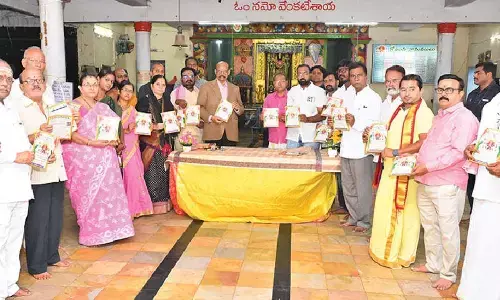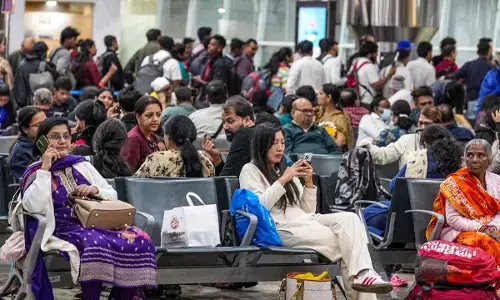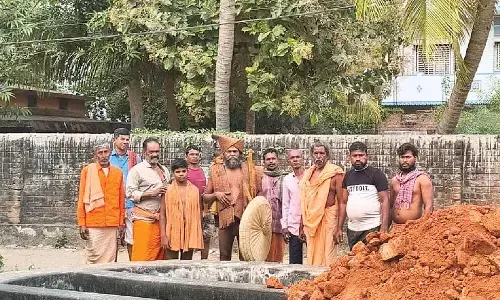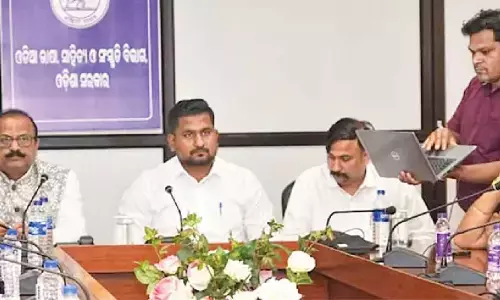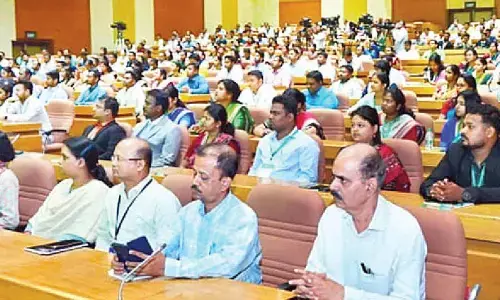Groundwater levels hit new lows

Groundwater levels hit new lows, Rapid and rampant concretisation and lack of rainwater harvesting pits have plummeted the groundwater water levels in the city to deplorable levels.
Rapid concretisation, lack of rainwater harvesting pits and massive spurt in population leave the city high & dry
Rapid and rampant concretisation and lack of rainwater harvesting pits have plummeted the groundwater water levels in the city to deplorable levels. According to a recent report by the Ground Water Authority, the water levels in most parts have receded alarmingly and reported negative figures, when compared to past few years. Water levels have receded by a total of 2.20 metres in all the areas, with Qulsumpura registering a fall of 5.29 metres.
The city receives an average annual rainfall of 643.5 mm and last year the average rainfall was up by 15 per cent to 738.9 mm, yet the groundwater water levels haven’t increased.
“City would receive 40-42 days of rainfall every season during mid-June to September. In 2013, rains continued till October, recording an additional 10-12 days of rainfall. As a result, an additional rainfall of 15 per cent was received. However, due to poor recharge, the groundwater level was in minus figures in most places,” said Ramesh, deputy director, Ground Water department.
SR Nagar, Ameerpet, Saidabad, Gachibowli, Chandrayangutta, Marredpally, Malkajgiri, Sanjeeva Reddy Nagar, Nampally, Khairtabad and Rajendranagar were the areas which had water levels in negative figures against the previous years. In all these areas, bore wells need to be dug up to at least 1,000 feet to draw water.
One of the reasons which could be attributed to water deficit is the meteoric spurt in population of the city. The population of Hyderabad doubled from 36.37 lakh in 2001 to 68.09 lakh in 2011. This resulted in a lot of localities being set up on the outskirts of the city. In Shamshabad, for example, even before the city’s civic body could take control of the area due to the establishment of the airport, there was a heavy influx of population settling in nearby areas like Rajendranagar. The residents draw plenty of groundwater which resulted in its depletion. The sprawling areas on the outskirts depend on groundwater in the absence of municipal supplies.
The recent heavy rains have done precious little to raise the worsening groundwater level. According to Ground Water Authority reports, not even a metre of groundwater table has been recharged in the last one month. It is a cause for worry as out of the total demand for water, about 25 to 30 per cent is met by groundwater alone.
The main reason for the groundwater table not getting recharged is the construction of concrete buildings in every nook and corner, which leaves little space for rainwater to seep into the ground. Besides this, all the main and internal roads are covered either by BT or concrete, causing run-off of the rainwater. Another reason is that despite the mandatory rule to have Rainwater Harvesting Structures (RWHS) under the Andhra Pradesh Water, Land and Tree Act (APWALTA), one can hardly find them in households, residential or commercial complexes.
“Water bodies are the main source for recharging the groundwater table. However, hundreds of lakes that existed in the last few years are no more. Almost all water bodies in city have been encroached. Moreover, lack of proper channelising of rainwater into water harvesting pits instead of drainage and increased discharge of water due to increased population are the main reasons for decrease in groundwater table,” said Chakri of Save Our Urban Lakes (SOUL).














